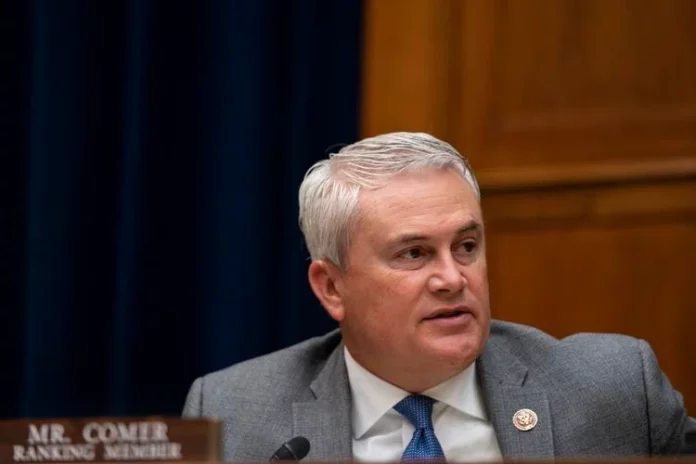Lawmakers are outraged after reports that federal COVID-relief tax dollars may have gone to wealthy hospitals while avoiding helping out poor hospitals in recovering from the pandemic.
Republican members of Congress have raised this very question, asking why $17 billion of COVID-19 relief funds was used by hospitals with profits topping more than $53 billion, “while $35 billion went to hospitals that reported a loss of almost $130 billion.”
House Committee on Oversight and Accountability Chairman James Comer, R-Ky., and Rep. Nick Langworthy, R-N.Y., launched an investigation this week into the Department of Health and Human Services over the matter, the latest of several questions about how trillions of COVID-19 relief dollars were spent, or misspent.
“The federal spending spree during the COVID-19 pandemic produced historic amounts of waste and fraud, and American families are paying a steep price as a result,” Heritage Foundation Budget expert David Ditch told The Center Square. “The exact amount is impossible to calculate because so much was given in so many directions.”
The lawmakers sent a letter to HHS Secretary Xavier Becerra demanding answers for why rural hospitals were “battling bankruptcy” while wealthier hospitals received more funds.
“It is crucial that we understand how the Department of Health and Human Services distributed these funds to hospitals that did not need it while hospitals in need received minimal benefit,” the letter said. “We request documents and communications to assist the Committee’s oversight of HHS’s administration of COVID-19 relief funds to low-income hospitals.”
This isn’t the first time COVID-19 relief funding has come under scrutiny. Lawmakers passed six bills totaling about $4.6 trillion in spending post pandemic, most of which has already been spent.
“Even though state and local governments did not see a meaningful drop in tax revenue, Congress still shoveled hundreds of billions of dollars in ‘relief’ their way,” Ditch said. “With money to burn, states embarked on a spending spree of their own that featured boondoggles, corporate welfare, and food stamp expansions for wealthy households.”
Much of the funding passed in the wake of COVID-19 was lost to waste, fraud, and abuse, watchdog groups say.
“Massive increases in federal unemployment benefits led to individuals and criminal networks targeting the program for easy money, to the tune of hundreds of billions of dollars in fraudulent claims,” Ditch said. “The Paycheck Protection Program (PPP) also suffered from large amounts of fraud, with just one notable example including a Georgia man using a PPP loan to buy a $57,000 Pokémon trading card.”
The Government Accountability Office has documented this kind of waste at length. From GAO’s February report:
While fraud and accountability issues will continue to occur in COVID-19 relief programs, there is already ample evidence of widespread fraud, improper payments, and accountability deficiencies during the pandemic. For example, GAO found that from March 2020 through January 13, 2023, at least 1,044 individuals pleaded guilty to or were convicted at trial of federal charges of defrauding COVID-19 relief programs. This includes the Small Business Administration’s (SBA) Paycheck Protection Program (PPP) and COVID-19 Economic Injury Disaster Loan (COVID-19 EIDL) program, the Department of Labor’s (DOL) Unemployment Insurance (UI) programs, and economic impact payments issued by the Department of the Treasury and the Internal Revenue Service.
As The Center Square previously reported, billions of dollars went to “equity warriors” in schools, sparking backlash.
“For example, California used ESSER funds for training in ‘environmental literacy,’ ‘ethnic studies,’ and ‘LGBTQ+ cultural competency,’” Republican lawmakers said in a letter last year to U.S. Department of Education Secretary Miguel Cardona. “New York used part of the $9 billion it received to provide staff development on ‘culturally responsive sustaining instruction’ and ‘privilege’ and to recognize ‘equity warriors.’ Illinois received $5.1 billion, which it partially used to emphasize ‘equity and diversity’ and make ‘equity-driven investments.’ At least ten other state plans included proposals to use the ESSER funds to implement racially biased curriculum and programs based on Critical Race Theory.”
The federal Paycheck Protection Program and Economic Injury Disaster Loan were reportedly rushing funds out the door, leading to significant issues. Unemployment insurance also saw high levels of waste.
The Department of Labor Inspector General estimated about 42% of the pandemic unemployment dollars were misspent, with 20% going to fraudulent recipients.
“[Employment and Training Administration] and states made significant efforts; however, they did not protect pandemic-related UI funds from historic levels of improper payments, including fraud,” the IG said in its report from last September. “We attribute this to four causes.”
The watchdog group pointed to government failures that allowed “large-scale fraud.”
“Specifically, states did not perform eligibility testing, ETA’s oversight was not timely enough, PUA initially allowed claimants to self-certify their eligibility, and ETA suspended 1 of their primary oversight tools for the first 3 months of the CARES Act,” the report said. “Furthermore, ETA’s interpretation of its regulations hindered the OIG’s timely and complete access to state UI claims data to assist in detecting and deterring large-scale fraud.”
Republished with the permission of The Center Square.














